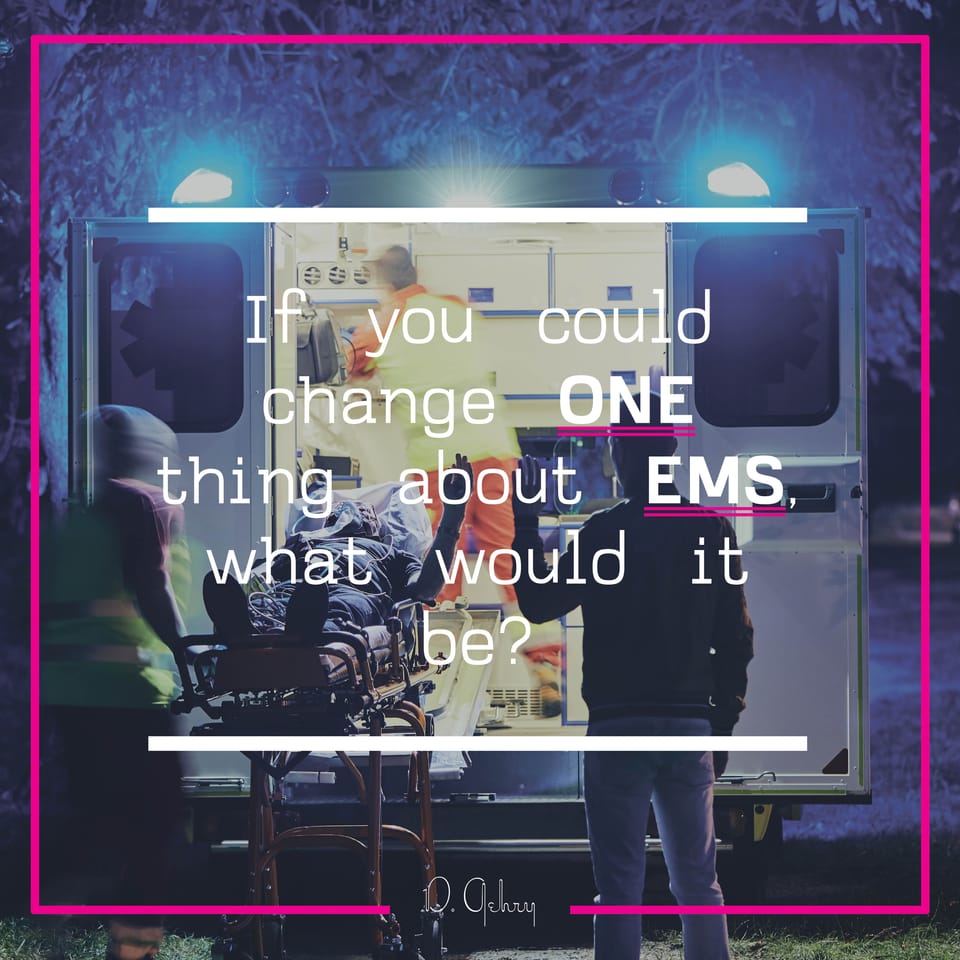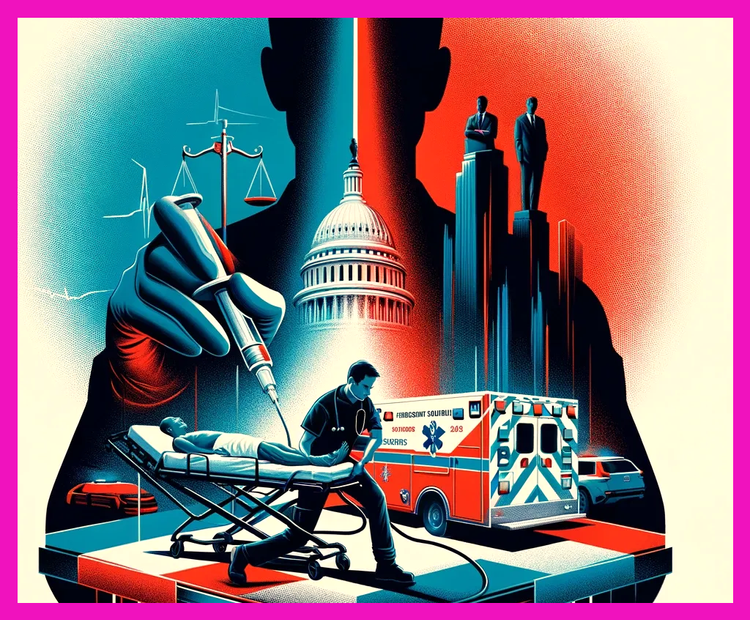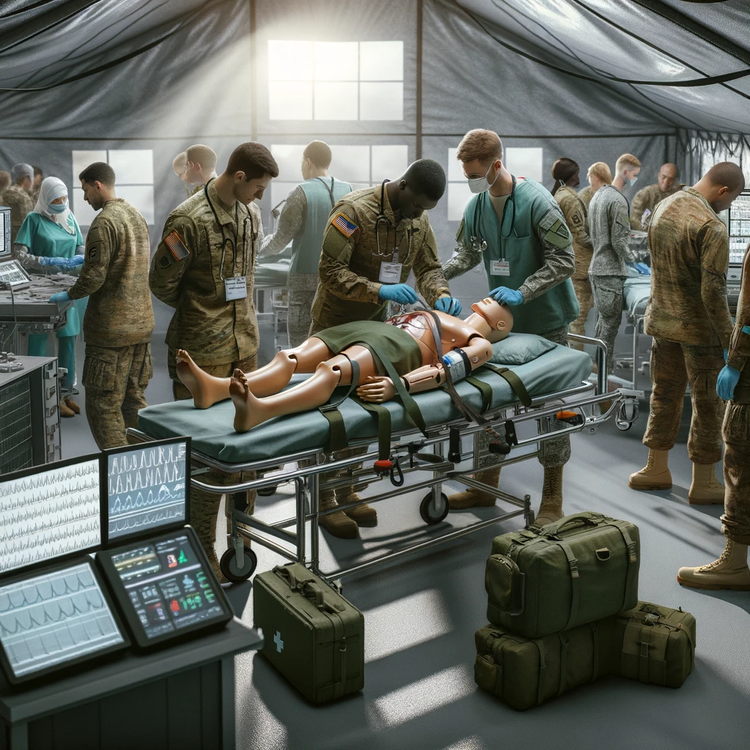What’s the One Thing You’d Change About Emergency Response?

Introduction: A System Under Strain
When someone dials 9-1-1, they expect immediate, lifesaving assistance. But what if the response is delayed due to system inefficiencies, outdated protocols, or resource shortages? Every second matters in an emergency, yet countless barriers prevent emergency medical services (EMS) from delivering optimal care when it is needed most. The single biggest change that could revolutionize emergency response? Integrating real-time data and AI-driven predictive analytics into EMS operations.
Emergency response systems worldwide face numerous challenges: long wait times, hospital overcrowding, resource misallocation, and inefficient dispatching. By leveraging technology to improve triage, response times, and decision-making, we could radically transform the way EMS operates—saving more lives and optimizing care.
The State of Emergency Response: Where Are the Pain Points?
Before diving into solutions, it’s crucial to understand the most pressing inefficiencies in today’s emergency response landscape. Here are some key issues backed by real-world data:
- Delays in Response Times: A study published in JAMA Network Open found that the median EMS response time in the U.S. is 7 minutes in urban areas but can exceed 14 minutes in rural settings. In critical cases such as cardiac arrest, each passing minute without intervention reduces survival chances by 7-10%.
- Hospital Overcrowding and Offload Delays: Paramedics often spend hours waiting to offload patients in emergency rooms due to a lack of available beds. A 2023 report from the American College of Emergency Physicians found that nearly 90% of ER departments are operating at or beyond capacity.
- Resource Misallocation: Dispatchers often send ambulances to low-priority calls, stretching EMS resources thin. Research indicates that up to 40% of EMS calls are non-emergent and could be better handled by alternative healthcare pathways.
- Poor Coordination Between Agencies: A lack of seamless communication between EMS, hospitals, law enforcement, and fire departments can lead to confusion, duplication of efforts, and poor patient outcomes.
- Burnout and Mental Health Crisis in EMS: EMS professionals experience some of the highest rates of burnout and mental health struggles due to long hours, traumatic incidents, and insufficient support structures. This contributes to workforce shortages and decreased efficiency in emergency response.
The One Change That Could Transform EMS: AI-Powered Predictive Analytics
Real-time data integration and AI-driven predictive analytics could be a game-changer for emergency response.This approach would optimize resource allocation, improve triage accuracy, and reduce response times. But how does it work?
How AI-Powered EMS Systems Would Work
- Smart Dispatching: AI algorithms analyze historical emergency call data, weather conditions, traffic patterns, and real-time EMS availability to deploy the nearest, most suitable ambulance.
- Predictive Resource Allocation: AI can predict where emergencies are most likely to occur based on past patterns, adjusting ambulance positioning accordingly.
- Automated Triage Assistance: Machine learning models analyze patient symptoms from 9-1-1 calls to assist dispatchers in categorizing emergencies more accurately.
- Hospital Load Balancing: Real-time data integration allows EMS to see which hospitals have the shortest wait times, diverting patients accordingly.
- Integration with Wearable Technology: Patients with chronic conditions or high-risk profiles (e.g., cardiac patients) can have real-time health monitoring devices that alert EMS before a crisis even occurs.
- Enhanced Decision Support for Paramedics: AI-driven mobile applications could provide EMS personnel with decision-support tools, offering guidance on best treatment practices, medication dosages, and dynamic protocols based on real-time patient data.
- Automated Documentation and Reporting: AI-powered voice-to-text systems could streamline patient care documentation, reducing paperwork burdens and enabling paramedics to focus more on patient care.
Implementing the Change: What Needs to Happen?
Revolutionizing EMS with AI-driven analytics requires several key changes in policy, training, and infrastructure:
1. Policy Adjustments
- Governments must invest in EMS technology infrastructure to enable AI integration.
- Regulatory frameworks should allow data-sharing agreements between EMS, hospitals, and public health agencies.
- Revised guidelines should support alternative response models, such as telemedicine triage for non-emergent cases.
- Policymakers need to develop ethical guidelines to address concerns about AI bias, patient privacy, and accountability in AI-driven decision-making.
2. Technological Upgrades
- EMS agencies need to adopt real-time cloud-based platforms for data sharing.
- Dispatch centers should integrate AI-powered triage software to assist human operators.
- Paramedics must have access to mobile dashboards that provide real-time hospital capacity updates and patient health data.
- Development of integrated smart city infrastructure, where EMS technology is seamlessly linked with traffic control systems to optimize ambulance routing.
3. Training and Workforce Adaptation
- EMS personnel should be trained on how to interpret AI recommendations in real-time.
- Dispatchers must learn how to utilize AI tools effectively without fully relying on automation.
- Hospitals should establish better coordination protocols to manage incoming EMS patients efficiently.
- Mental health support programs should be expanded to address burnout among EMS workers, improving workforce resilience and retention.
Perspectives from the Field: What Experts Say
Paramedics' Viewpoint "We often get dispatched to calls that could be handled differently—like a minor injury that could be managed through telemedicine. AI could help prioritize true emergencies and prevent unnecessary strain on our system." – Mark Reynolds, Advanced Care Paramedic
Policymakers' Perspective "The biggest barrier to implementing AI in EMS is not the technology itself, but policy frameworks that haven't caught up. We need to rethink data-sharing laws and interagency cooperation to make this possible." – Dr. Emily Hart, Public Health Policy Advisor
Healthcare Leaders' Insights "Hospitals are drowning in ER congestion. AI-driven pre-hospital triage and smart dispatching would alleviate pressure on emergency rooms by ensuring patients are taken to the right place at the right time." – Dr. Sandra Lee, ER Director
Conclusion: Time to Take Action
Emergency response systems worldwide are facing mounting pressure. By integrating real-time data, AI, and predictive analytics, we can make EMS faster, smarter, and more efficient. This isn’t just about technology—it’s about saving lives, reducing stress on frontline workers, and making emergency healthcare more accessible and effective.
So, here’s the question for you: If you could change one thing about emergency response, what would it be? Let’s continue the conversation and push for meaningful innovation in EMS.


